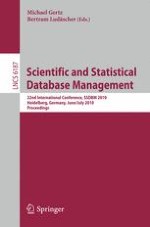2010 | Buch
Scientific and Statistical Database Management
22nd International Conference, SSDBM 2010, Heidelberg, Germany, June 30–July 2, 2010. Proceedings
herausgegeben von: Michael Gertz, Bertram Ludäscher
Verlag: Springer Berlin Heidelberg
Buchreihe : Lecture Notes in Computer Science
